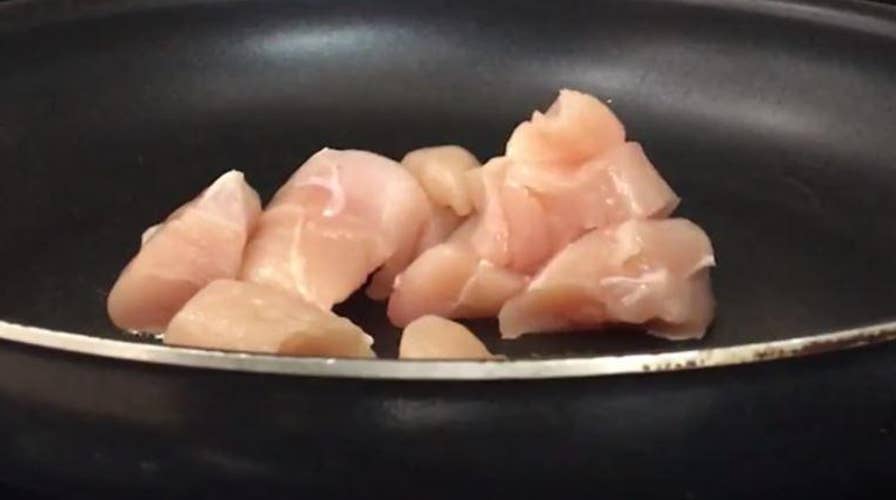CDC: Don’t wash your raw chicken
The CDC is issuing a stern warning against washing raw chicken and explains why it is so dangerous.
You shouldn’t wash raw chicken before you cook it.
That’s what experts are saying after a new consumer study was released from North Carolina State University and the United States Department of Agriculture (USDA).
In it, researchers say that washing chicken actually increases the risk of contamination and foodborne illnesses.
PIG EAR SALMONELLA OUTBREAK LINKED TO 143 ILLNESSES PROBED BY FDA, CDC
“Some consumers think they are removing bacteria and making their meat or poultry safe,” the USDA’s “Ask Karen” team told Healthline. “However, some of the bacteria are so tightly attached that you could not remove them no matter how many times you washed.”
Other bacteria strains will rinse off, but this isn’t necessarily a good thing.
Raw chicken almost always contains Campylobacter, a bacteria strain that causes diarrhea, fever, and cramping. The meat also may contain Salmonella, Clostridium perfringens, and other bacteria.
“The splashing of water, holding the chicken in your hands, and even the juices running through the sink all create this heightened risk [of contamination and illness],” Kristin Kirkpatrick, MS, RDN, author of “Skinny Liver” and manager of wellness nutrition services at Cleveland Clinic Wellness Institute, told Healthline.
According to the Centers for Disease Control and Prevention (CDC), 1 in 6 people in the United States becomes ill from improperly prepared food every year.
Reducing your risk means cooking without washing.
What about antibacterial solutions?
Water splashes can quickly spread foodborne germs across your kitchen, but what about antibacterial agents such as lemon juice and white vinegar?
Experts say it doesn’t matter if you’re rinsing with water, soap, or an antibacterial agent. They all pose risks.
“I don’t recommend any of these methods as they all involve actually washing the chicken,” Kirkpatrick said.
“Washing your chicken or meat can actually increase your risk of foodborne illness as you more easily cross-contaminate other parts of your kitchen when you do,” Katie Ferraro, MPH, RDN, CDE, dietitian and nutrition communications consultant, told Healthline.
Kirkpatrick says she doesn’t wash her chicken for those exact reasons.
“I use culinary gloves to handle the chicken straight from the packaging to pan or baking dish,” she said.
Then, she follows the USDA’s advice for safely preparing poultry.
“Remember, cooking poultry to its correct internal temperature of 165 degrees Fahrenheit will kill bacteria,” says Kirkpatrick.
The USDA’s “Ask Karen” team told Healthline that baking, broiling, grilling, and boiling are all safe methods of preparing food, so long as the meat reaches the necessary internal temperature.
Reducing kitchen contamination
According to the USDA, “Using a food thermometer is the only sure way of knowing if your food has reached a high enough temperature to destroy foodborne bacteria.”
Both Kirkpatrick and Ferraro agree.
You can find a food thermometer online or at kitchenware stores.
Kirkpatrick suggests other simple ways to prevent contamination and illness:
Use separate cutting boards for vegetables, meat, and poultry. Many stores have them color-coded to remember what goes where
Wash your hands often when handling meat and poultry, even when using gloves.
CLICK HERE TO GET THE FOX NEWS APP
Take the temperature of meat and poultry to ensure it has reached acceptable internal cooking temps.
Store meat and poultry on the bottom shelf of the refrigerator to avoid juices from dripping down onto fresh food.
Hold cold foods on ice and hot foods in warm devices, such as chafing dishes, if being served over a long period (like with a buffet).

